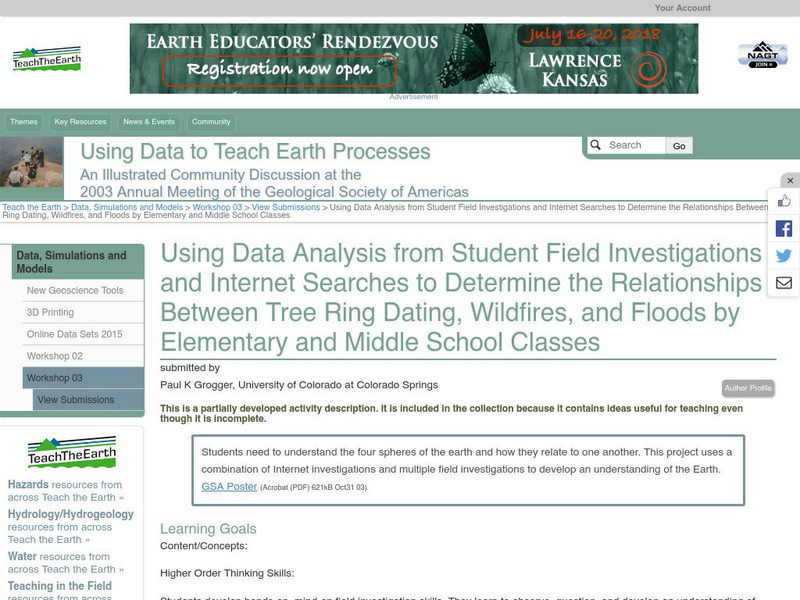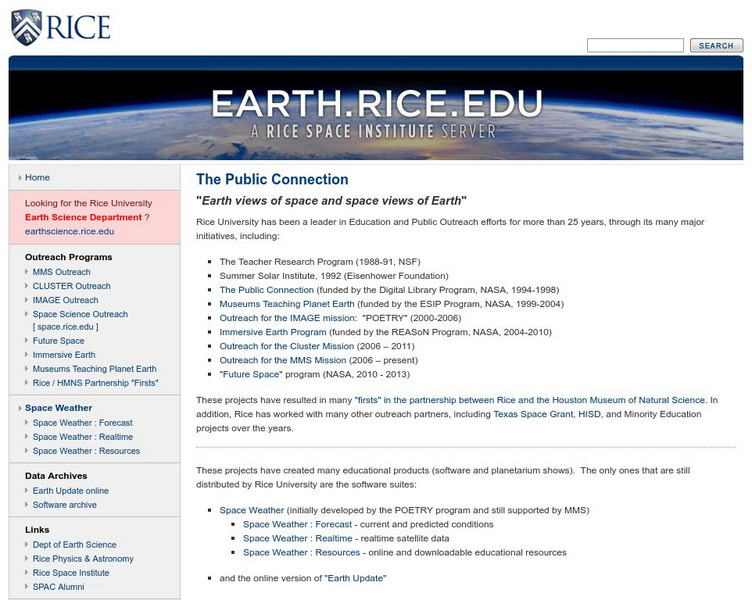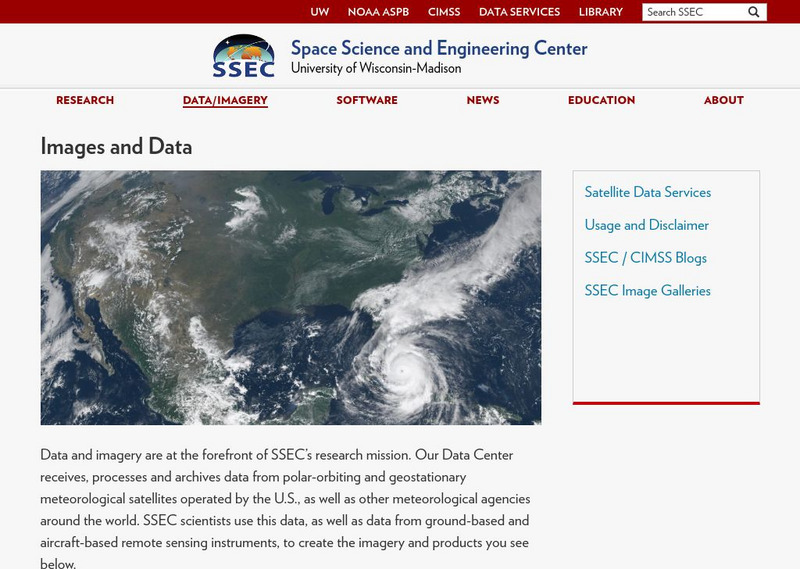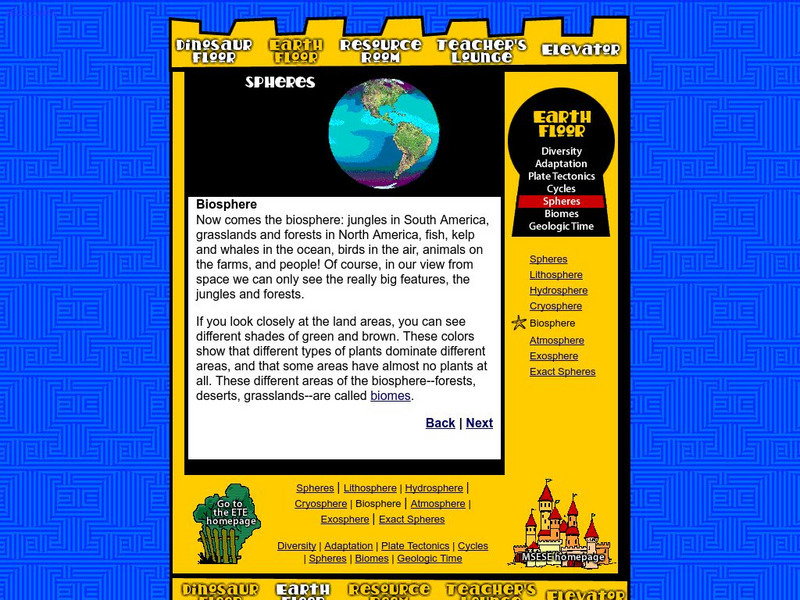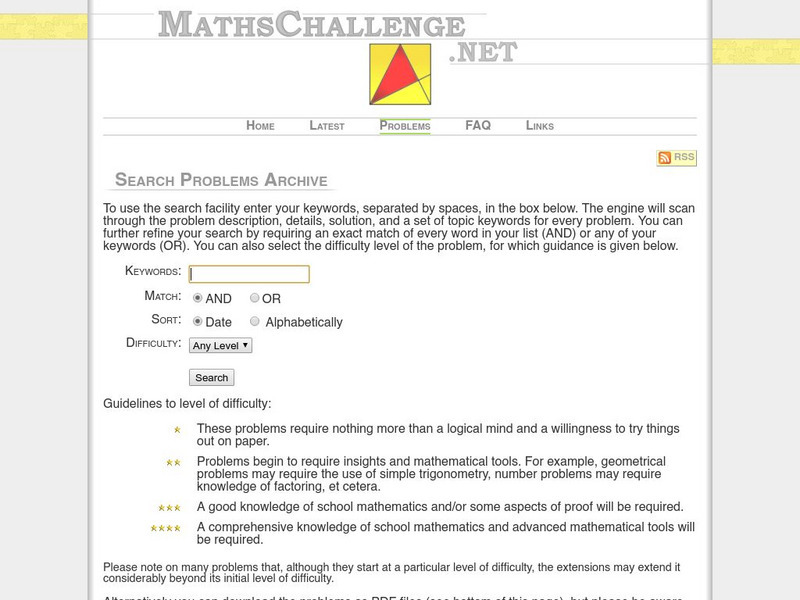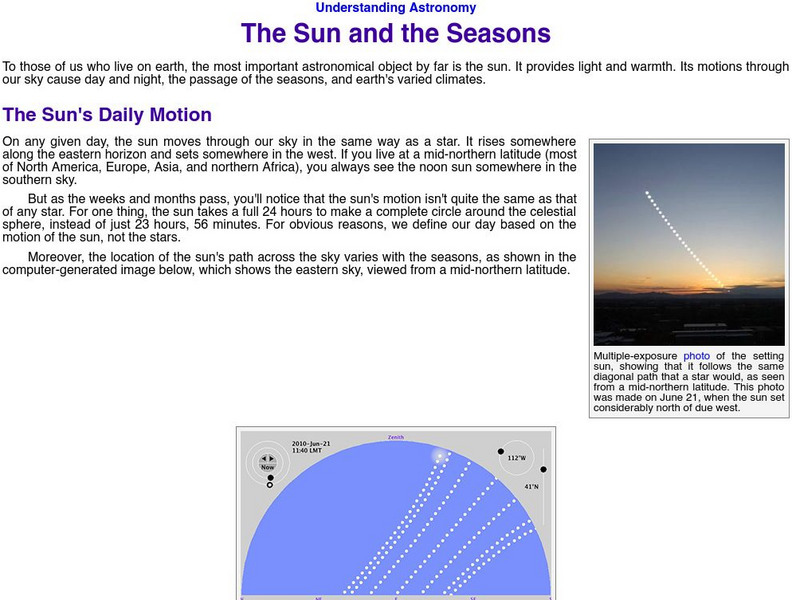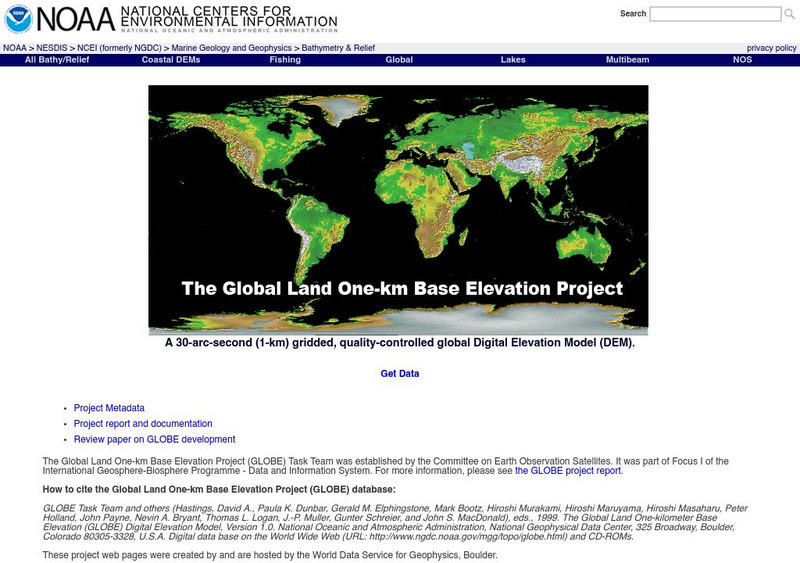Hi, what do you want to do?
Science Education Resource Center at Carleton College
Serc: Relationships Between Tree Ring Dating, Wildfires, and Floods
In this lesson plan students will understand the four spheres of the earth and how they relate to one another. This project uses a combination of Internet investigations and multiple field investigations to develop an understanding of...
Rice University
Museums Teaching Planet Earth: Hydrosphere
This tutorial looks at the hydrosphere, that component of the earth that is liquid water such as rivers, streams, oceans, and so on.
Center for Educational Technologies
Wheeling Jesuit University: How Are Things Divided Among Earth's Four Spheres?
See if you can classify various objects in the categories of land, water, air or living thing. This activity is interactive and you will receive a score for your performance.
Center for Educational Technologies
Nasa: Classroom of the Future: Spheres Atmosphere
Atmosphere is briefly discussed here as one of earth's "spheres."
University of Wisconsin
Ssec: Real Time Imagery and Data: Satellite Images of the Earth
Check out real-time satellite photos of the earth to study weather patterns.
Center for Educational Technologies
Nasa: Classroom of the Future: Spheres: Lithosphere
At this site from the NASA Classroom of the Future, you can learn about the many different layers of the earth and see what the earth would look like cut in half.
Center for Educational Technologies
Nasa: Classroom of the Future: Spheres: Biosphere
Use this site to learn about the different areas of the biosphere, known as biomes.
Science Education Resource Center at Carleton College
Serc: Lab 1: Think Globally: Act Locally
A lab experiment in a series of experiments that explores Earth Science Systems. This lab introduces students to the parts of the Earth system: the atmosphere, hydrosphere, biosphere, and pedosphere. As the students learn about the...
The Wonder of Science
The Wonder of Science: 5 Ess2 1: Earth Sphere Interactions
Fifth graders develop a model using an example to describe ways the geosphere, biosphere, hydrosphere, and/or atmosphere interact.
Khan Academy
Khan Academy: Biogeochemical Cycles Review
Review information on the cycling of matter throughout the spheres of Earth.
Mocomi & Anibrain Digital Technologies
Mocomi: Major Domains of the Earth Biosphere
Learn about the biosphere, when it originated, how life sustains itself, and what processes occur.
Maths Challenge
Maths challenge.net: Curvature of the Earth
Distance problem using a spherical radius and height.
Other
Weber State University: The Sun and the Seasons
To those of us who live on earth, the most important astronomical object by far is the sun. This article explains how the motion of the sun through our sky cause day and night, the passage of the seasons, and earth's varied climates.
Scholastic
Scholastic: Study Jams! Science: Lithosphere, Hydrosphere, and Atmosphere
A slideshow and a short multiple-choice quiz on the rock surface of the Earth, its water, and the gas layers that surround it.
NOAA
Noaa: Ngdc: Globe Project
Explore some topographic data at the Globe site. What environmental measurements are taken in the study? How are these measurements presented?
Texas Instruments
Texas Instruments: Numb3 Rs: Traveling on Good Circles
Based off of the hit television show NUMB3RS, this high-level math lesson has students delve into the topic of Great Circles on a sphere (specifically, the Earth), in order to find the shortest distances between locations. Students will...
NASA
Nasa: Climate Kids: What Is Happening in the Ocean?
Find out why the oceans on Earth are so vital to the cycling of matter and energy through its spheres.
Other
Lee Trampleasure: Science Education: Coriolis Effect
Examine three examples of the Coriolis Effect with reference to wind. The effect is that when an object is moving perpendicular to the rotation of a sphere the object will appear to travel in a curved line. Prevailing winds will look as...
Curated OER
Educational Technology Clearinghouse: Clip Art Etc: Nicolaus Copernicus
Nicolaus Copernicus (February 19, 1473 - May 24, 1543) was the first astronomer to formulate a scientifically based heliocentric cosmology that displaced the Earth from the center of the universe. His epochal book, De revolutionibus...
Other popular searches
- Four Spheres of Earth
- Spheres of Earth Activity
- Spheres of Earth Acidity
- Identify Spheres of Earth
- Spheres of Earth Acitity





